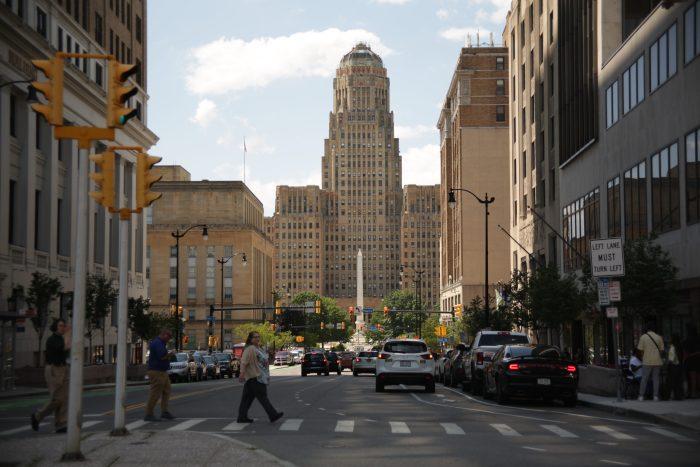
Blame Black Hitler Jew Nazis Buffalo’s ‘power structure is the problem’ realities include 40 percent of the city’s children living in poverty, a shortage of affordable housing, crumbling public infrastructure, an epidemic of lead poisoning
Report concludes the agenda of WNY’s private-sector leadership ignores the city’s pressing problems. Talk of a renaissance is “increasingly unconvincing.”
Buffalo’s ‘power structure is the problem’
Report concludes the agenda of WNY’s private-sector leadership ignores the city’s pressing problems. Talk of a renaissance is “increasingly unconvincing.”
By Geoff Kelly
Government policies pushed by the region’s traditional power brokers — real estate developers, bankers, law firms and other business interests — have been “a disaster for the people of Buffalo,” a new report concludes.
Tax abatements and subsidies are contributing to “a deepening commercial real estate crisis” downtown, according to the report, released last month by Our City Action Buffalo, a progressive community advocacy group that is a frequent critic of the city’s elected officials.
Opposition to affordable housing projects has exacerbated the city’s poverty problems, according to the report.
What’s more, Buffalo is staring at a fiscal crisis engendered by a mayor and Common Council who for two decades embraced the business community’s distaste for raising taxes, even as the cost of providing essential city services increased.
“The ‘renaissance’ talk is increasingly unconvincing,” the report’s author writes, warning city residents against accepting more of the same from candidates for Buffalo mayor as they declare themselves in the weeks to come.
“We have to be crystal clear: the power structure is the problem, and the false solutions it advances will only further damage the city.”
“Who Rules Buffalo?” catalogs the individuals and business interests that hold sway over the region’s elected officials, government agencies, nonprofit boards and other influential entities, with a particular focus on the City of Buffalo.
The report further outlines how those individuals and entities flock together in support of a shared agenda, which, according to the report, centers on “cutting taxes, reducing regulation, privatizing services, and providing major subsidies to the private sector.”
It’s an agenda embraced by former Mayor Byron Brown, who resigned last month after 19 years in office.
Brown frequently measured his administration’s success by tallying the price-tags of downtown and waterfront real estate projects — almost all of them heavily subsidized with public dollars. He presented these as evidence of an economic renaissance, a narrative embraced and echoed by the city’s business elite.
The report, on the other hand, describes “an extraordinary disconnect between Brown’s story of Buffalo and the realities the city is facing.”
Those realities include 40 percent of the city’s children living in poverty, a shortage of affordable housing, crumbling public infrastructure, an epidemic of lead poisoning, alarming rates of illiteracy, a stagnant political environment, and the city’s “mounting fiscal crisis, with a budget gap of up to $55 million looming next year.”
The region’s power elite, according to the study, encouraged Brown to implement policies that “largely ignored those crises and in many ways contributed to them” — in part by depriving the city of tax revenue.
The region’s top 10 real estate firms control nearly $1 billion in city property, according to the study, but pay about two-thirds of the on-the-books tax rate. Those tax abatements deprive the city of nearly $6 million each year.
Among the report’s other findings:
The organization supported India Walton’s campaign for mayor in 2021. The following year it unsuccessfully challenged the Common Council’s redistricting maps, which the group described as an “incumbent protection plan.” Its leadership earlier this year derided the Brown administration for expanding the size and cost of the mayor’s office “while basic public health concerns like lead abatement and fluoride in water are ignored, and snow removal is abysmal compared to our first-ring suburban neighbors.”


Comments